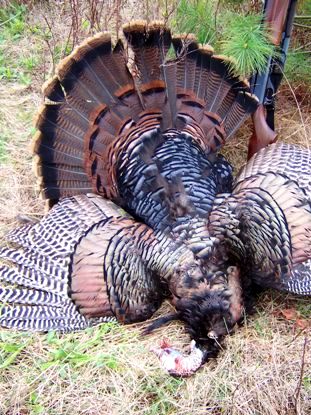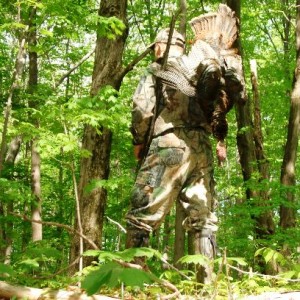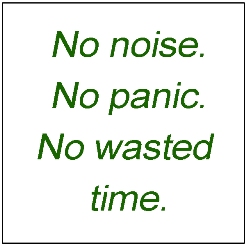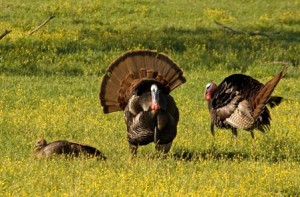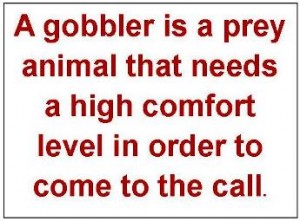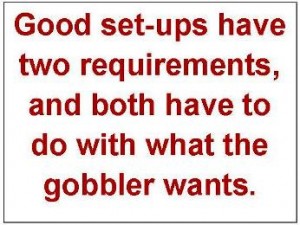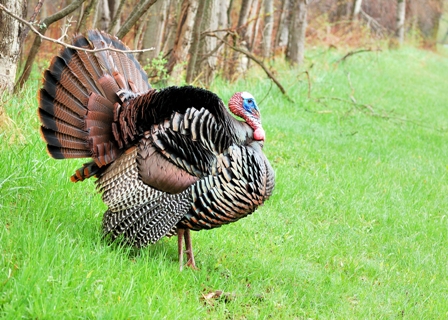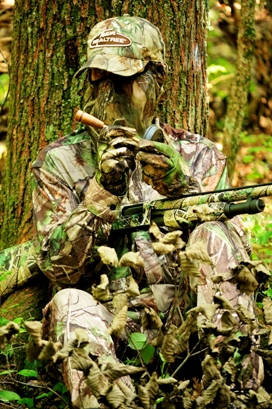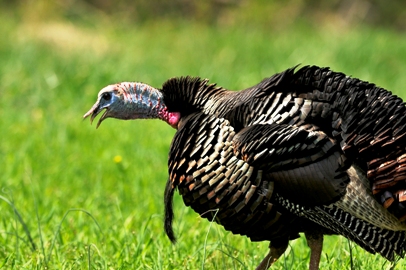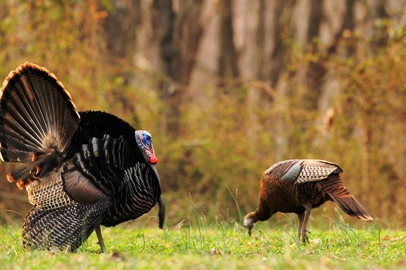By William Clunie
Here’s Your To-Do List
for Those Final Seconds of The Hunt
Once a turkey hunter has learned the basic skills for calling in a mature gobbler, what happens during the last few moments before pulling the trigger often spells the difference between success and failure.
Turkeys never stop teaching me new tricks, so I know from experience that closing the deal on mature gobblers takes a little finesse. These suggestions really can make a huge difference. Use them and you’ll put the finishing touch on your to-do list for success in the turkey woods. But you can’t use them if you’re making a common mistake, so let’s correct that first.
A Common Mistake
Rushing the shot is one of the easiest mistakes to make when closing the deal on a gobbler. You can do everything else right, but patience is critical as the last seconds of the hunt wind down. Without patience you’ll end up without a bird in hand.
I learned the hard way. During my first few turkey hunting attempts, I scared off two birds with lightning-like quick shots. I found that I needed to relax a little and take my time during the final few seconds.
If your set-up is laid out right, decoys are properly placed, and the hunter doesn’t make any quick movements, most gobblers will be so focused on the dekes that a well-camouflaged hunter can make minor aiming adjustments without spooking him.
It sounds simple, but it is so very important to take plenty of time when the gobbler has finally committed to focusing on the decoys. If a slight adjustment needs to be made, just move very slowly and don’t worry too much about the breeding-frenzied gobbler.
What about silent toms that show up unannounced? I’ve been caught off-guard many times by gobblers quietly sneaking up on my set-up. Twice, I’ve even had my shotgun lying on the ground next to me when I suddenly spotted the turkey only a few feet from the decoys. In both cases I slowly raised my shotgun and took aim as the fired-up gobbler circled the decoy. The blast leveled them.
Very slow movement is your best insurance against last-minute problems. Then, you can benefit from these other precautions.
Clunie’s Top Ten Tips for Closing the Deal
1. A hunter can move as slowly as he wants, but if the decoy set-up isn’t positioned properly all bets are off. Poor decoy placement ranks right up there with faulty, last-minute calling techniques for ruining a good hunt.
2. Keep hen decoy heads down in the feeding position. Gobblers approaching hen decoys with their heads up in the alert position will remain on alert, too.
3. Better yet, have the hen in the sitting position, right on the ground in front of a jake decoy. Dominant gobblers will assume this is a breeding posture and charge in with confidence.
4. Try to keep the sun at your back, and position yourself in the shadows. This tip sounds elemental, but not many hunters can remain unseen if they’re bathed in sunlight. Think ahead to where the sunlight will eventually fall and avoid those areas when setting up your shooting position.
5. Pre-position your shotgun across your knees, aimed in the general direction of the decoys. That position minimizes gun movement as the gobbler approaches.
6. Having a big tree trunk between your position and the decoys sounds odd, but it lets you make your movements when the gobbler’s vision is blocked by the tree.
7. Too much calling, or making the wrong calls, can spoil a hunt – especially when the gobbler is close enough to assess the situation. Remember, he’s deciding if he should charge in or leave. In psychological terms this is called the “fight or flight” response. A turkey’s response to a breeding fight is similar.
8. Soft purring with a few muted clucks gives the impression of a contented hen, and will keep any male turkey from running. Avoid loud calling, especially squirrely-sounding putt-putt calls that sound like a nervous hen.
9. Use calls that require the least hand movement when the gobbler is close. I can’t handle the way a mouth call tickles my throat, but the hunter who knows how to use one properly has the best chance to bag a gobbler by minimizing movement.
10. I place a box call directly in my lap, and when the gobbler gets close I only have to make a short movement to activate the call.
These few tips will become second nature after using them several times in the turkey woods. Take your time. If you must move, do it slowly. And squeeze the trigger.
***
About William Clunie
 A registered Maine master guide, outdoor writer, and nature photographer, author William Clunie is “living the dream” in the rugged mountains of Western Maine. Contact him at william.clunie@gmail.com.
A registered Maine master guide, outdoor writer, and nature photographer, author William Clunie is “living the dream” in the rugged mountains of Western Maine. Contact him at william.clunie@gmail.com.
Click HERE to read more articles about Turkey Hunting, and for the
best turkey skinning knives, click HERE.
3,285 total views, no views today


